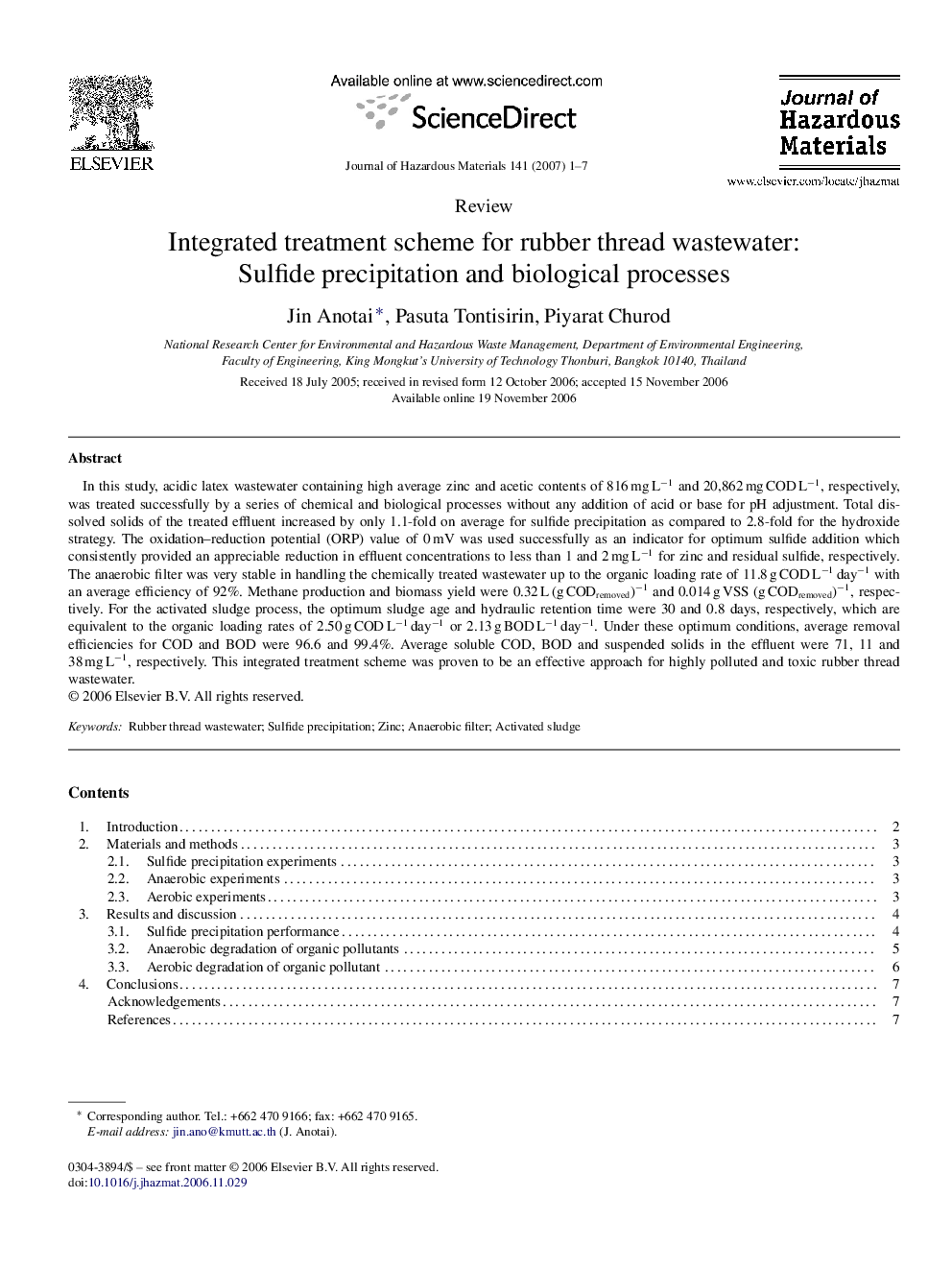| Article ID | Journal | Published Year | Pages | File Type |
|---|---|---|---|---|
| 584786 | Journal of Hazardous Materials | 2007 | 7 Pages |
Abstract
In this study, acidic latex wastewater containing high average zinc and acetic contents of 816 mg Lâ1 and 20,862 mg COD Lâ1, respectively, was treated successfully by a series of chemical and biological processes without any addition of acid or base for pH adjustment. Total dissolved solids of the treated effluent increased by only 1.1-fold on average for sulfide precipitation as compared to 2.8-fold for the hydroxide strategy. The oxidation-reduction potential (ORP) value of 0 mV was used successfully as an indicator for optimum sulfide addition which consistently provided an appreciable reduction in effluent concentrations to less than 1 and 2 mg Lâ1 for zinc and residual sulfide, respectively. The anaerobic filter was very stable in handling the chemically treated wastewater up to the organic loading rate of 11.8 g COD Lâ1 dayâ1 with an average efficiency of 92%. Methane production and biomass yield were 0.32 L (g CODremoved)â1 and 0.014 g VSS (g CODremoved)â1, respectively. For the activated sludge process, the optimum sludge age and hydraulic retention time were 30 and 0.8 days, respectively, which are equivalent to the organic loading rates of 2.50 g COD Lâ1 dayâ1 or 2.13 g BOD Lâ1 dayâ1. Under these optimum conditions, average removal efficiencies for COD and BOD were 96.6 and 99.4%. Average soluble COD, BOD and suspended solids in the effluent were 71, 11 and 38 mg Lâ1, respectively. This integrated treatment scheme was proven to be an effective approach for highly polluted and toxic rubber thread wastewater.
Related Topics
Physical Sciences and Engineering
Chemical Engineering
Chemical Health and Safety
Authors
Jin Anotai, Pasuta Tontisirin, Piyarat Churod,
